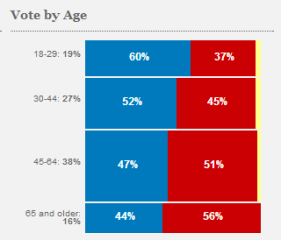
CC licensed stock.xchng photo by Darrell Rogers
So the world has reached the 6 billion mark in mobile phone subscriptions resulting in a profound shift in socio-cultural interactions that deserve significant examination (Goggin, 2011). Goggin’s view is supported by Castells’ (2007) assertion that “mobile telephony has emerged as one of the defining communication technologies of our time” (as cited in Campbell & Park, 2008, p. 372). Let’s step back for a moment and determine what this means in terms of impact. What is the social utility and what are the attendant social ramifications? How do we conduct ourselves – when do we access it – where do we communicate and why it is so important?
If, as asserted by Josgrilberg (2008, p. 2), we have reached the age of the digital locus, and that mobile telephony is the “door to this locus” then is it not time to establish ground rules for the evolution that is occurring in social norms?
Consider Josgrilberg’s concept of a digital locus. He describes this phenomenon as having discrete social conventions with associated material consequences. Wellman (as cited in Campbell & Park, 2008, p. 376) furthers this notion as he shifts the idea of personal connectivity from place, to person – the individual is “an autonomous communication node” or “portal”.

Nodes of Communication CC licensed from Flickr by Arenamontanus
Josgrilberg concludes that the digital locus “is a site of fulfillment and the struggle for survival” (2008, p. 2). This seems to me to dictate that we need discourse around how this alters current social conventions.
How and where we engage with each other is sometimes problematic as once clear social boundaries are blurred. Campbell and Park (2008) invoke the concept of copresent others. How many times have you been the unwitting recipient of a one-sided cell conversation that left you wishing to be anywhere but where you were? At what point, if ever, is it inappropriate to conduct personal business in a public setting via your mobile telephone? The illusory barriers referenced by Campbell and Park, are just that; illusory. It is time to decide if the encroaching personalization of public space is something with a social benefit or a lamented casualty of the growth in personal communication technology (PCT). Ruty224 poses the very valid question. Are real conversational skills being lost through the frequency and superficiality of some PCT communication?
Post-secondary classrooms no longer are the domain of the sage on the stage as the attention of undergrads is increasingly fragmented and focused on the technology that connects them instantly to their peer group. Absent presence in the classroom is not anew concept; students’ attention has always been divided. However, much of this division was the result of monologic media (in my case a novel inside a textbook). Dialogic media exacerbates the impact of absent presence as it requires active and reactive participation (Campbell & Park, 2008). Consider the perspective of Katie Benedict who freely acknowledges her dependence on her phone and its use in the classroom. Students and faculty need to work together to create classroom norms to govern this phenomenon.
As I referenced in my last post, Cisco Technology sponsored a survey that highlights the ubiquity of mobile phone technology. Read this article and you will likely recognize at least some elements of your own behavior. The car, toilet, workplace, bedroom – nowhere is off limits.
When we access no longer is dictated by the traditional notions of etiquette. Persons (like me) of a certain vintage will remember that it was considered bad form to telephone someone (land line, that is) past 10 p.m. PCT’s create and facilitate a frequency and immediacy of communication (i.e. texting and Facebook) where these social barriers are shattered.
The why of mobile technology use is most interesting in terms of socio-cultural impact. The mobile youth culture wants to carve out an increase in personal autonomy while they create a sense of personal identity. The intensity and frequency of PCT interaction allows enhanced privacy (from prying parents), increased social membership and interaction without geographic boundaries (Campbell & Park, 2008). This is an excellent tool in the arsenal of self-development and growth. Conversely, has it led to a rise in the helicopter parenting phenomenon by linking parents 24/7 to offspring? Mobile technology has aided and abetted personal political power. Social uprisings such as the Arab Spring were facilitated by social media – often through PCT (Campbell & Park, 2008). Peer created journalism is rising where individual citizens can record and upload eyewitness accounts of breaking news stories. While we have instant exposure to news, we need to ask if there has been attendant loss in the integrity and credibility of the stories. All of these occurrences create opportunities for reflective discourse, courtesy of mobile communications technology.
Shakespeare, via Hamlet, offers us the notion that “there is nothing either good or bad except thinking which makes it so”. This editorial does not profess to weigh the merits of mobile telephony. What is does that say is discourse is needed, boundaries discussed, impacts reviewed and social conventions established. Not by force, but by dialogue. I am prepared to start the conversation by taking this stand. If you would be uncomfortable hearing a very private conversation in a public space, then don’t engage in one yourself. Let’s tear down the “symbolic fences” (Campbell & park, 2008) and remember that these are imagined barriers that we have erected. Just because we ignore others around us doesn’t mean that they are not there. Followemc asks if smart phones have led to dumb users. Well, we don’t have to be. After all we live in a digital locus where the rules are ours to make, don’t we?








